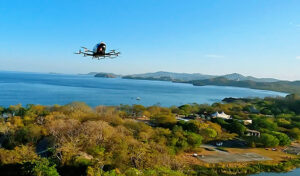US scientists developing wearable workplace air quality sensor
Scientists in Colorado are developing a real-time air pollution sensor that will be the size of a name tag.
The team at Colorado State University (CSU) is developing the lightweight, inexpensive, wearable air pollution monitor for aerosol and vapour hazards. They say that it will be ready to use out of the box and requires minimal user training.Â
Researchers want the device to help a range of workers including paramedics, firefighters and oil and gas drillers understand more about the air that they breathe at work.
The device will be similar to existing technology commercialised through lead researcher John Volckens’ company, Access Sensor Technologies.
Volckens, an air pollution specialist and professor in the Department of Mechanical Engineering, led the development of a personal air sampler called the Ultrasonic Personal Air Sampler, or UPAS, that collects data on particle exposures using a silent, low-power micropump.
The engineers will work with social scientists at the university so the device can achieve a broader impact and can be developed commercially.
The team at CSU includes; Elizabeth Williams whose expertise is in organisational and health communication; Ander Wilson, who has expertise in managing large environmental datasets; Ashley Anderson, an assistant professor in journalism; and Marilee Long, a professor in the same department who has expertise in effective health messaging.
The researchers believe that their project will change worker attitudes toward occupational hazard assessment and mitigation around air pollution.
John Volckens said: ‘First responders are one of the most vulnerable workforces to environmental hazards, they put their lives at risk, and they often pay the ultimate price,
‘Part of our challenge is to develop something so vanishingly small and quiet and unobtrusive that those first responders will have no problem wearing these devices. A primary goal of this project is to help workers gain the information they need to make decisions that protect themselves from the unseen hazards in the air around them.’













